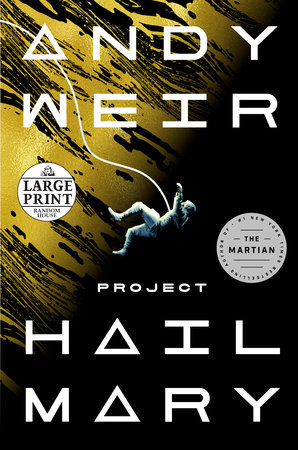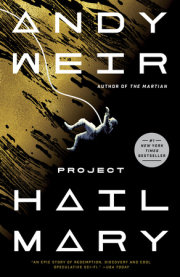Chapter 1“What’s two plus two?”
Something about the question irritates me. I’m tired. I drift back to sleep.
A few minutes pass, then I hear it again.
“What’s two plus two?”
The soft, feminine voice lacks emotion and the pronunciation is identical to the previous time she said it. It’s a computer. A computer is hassling me. I’m even more irritated now.
“Lrmln,” I say. I’m surprised. I meant to say “Leave me alone”—a completely reasonable response in my opinion—but I failed to speak.
“Incorrect,” says the computer. “What’s two plus two?”
Time for an experiment. I’ll try to say hello.
“Hlllch?” I say.
“Incorrect. What’s two plus two?”
What’s going on? I want to find out, but I don’t have much to work with. I can’t see. I can’t hear anything other than the computer. I can’t even feel. No, that’s not true. I feel something. I’m lying down. I’m on something soft. A bed.
I think my eyes are closed. That’s not so bad. All I have to do is open them. I try, but nothing happens.
Why can’t I open my eyes?
Open.
Aaaand . . . open!
Open, dang it!
Ooh! I felt a wiggle that time. My eyelids moved. I felt it.
Open!
My eyelids creep up and blinding light sears my retinas.
“Glunn!” I say. I keep my eyes open with sheer force of will. Everything is white with shades of pain.
“Eye movement detected,” my tormenter says. “What’s two plus two?”
The whiteness lessens. My eyes are adjusting. I start to see shapes, but nothing sensible yet. Let’s see . . . can I move my hands? No.
Feet? Also no.
But I can move my mouth, right? I’ve been saying stuff. Not stuff that makes sense, but it’s something.
“Fffr.”
“Incorrect. What’s two plus two?”
The shapes start to make sense. I’m in a bed. It’s kind of . . . oval-shaped.
LED lights shine down on me. Cameras in the ceiling watch my every move. Creepy though that is, I’m much more concerned about the robot arms.
The two brushed-steel armatures hang from the ceiling. Each has an assortment of disturbingly penetration-looking tools where hands should be. Can’t say I like the look of that.
“Ffff . . . oooh . . . rrrr,” I say. Will that do?
“Incorrect. What’s two plus two?”
Dang it. I summon all my willpower and inner strength. Also, I’m starting to panic a little. Good. I use that too.
“Fffoouurr,” I finally say.
“Correct.”
Thank God. I can talk. Sort of.
I breathe a sigh of relief. Wait—I just controlled my breathing. I take another breath. On purpose. My mouth is sore. My throat is sore. But it’s my soreness. I have control.
I’m wearing a breathing mask. It’s tight to my face and connected to a hose that goes behind my head.
Can I get up?
No. But I can move my head a little. I look down at my body. I’m naked and connected to more tubes than I can count. There’s one in each arm, one in each leg, one in my “gentlemen’s equipment,” and two that disappear under my thigh. I’m guessing one of them is up where the sun doesn’t shine.
That can’t be good.
Also, I’m covered with electrodes. The sensor-type stickers like for an EKG, but they’re all over the place. Well, at least they’re only on my skin instead of jammed into me.
“Wh—” I wheeze. I try again. “Where . . . am . . . I?”
“What’s the cube root of eight?” the computer asks.
“Where am I?” I say again. This time it’s easier.
“Incorrect. What’s the cube root of eight?”
I take a deep breath and speak slowly. “Two times e to the two-i-pi over three.”
“Incorrect. What’s the cube root of eight?”
But I wasn’t incorrect. I just wanted to see how smart the computer was. Answer: not very.
“Two,” I say.
“Correct.”
I listen for follow-up questions, but the computer seems satisfied.
I’m tired. I drift off to sleep again.
I wake up. How long was I out? It must have been a while because I feel rested. I open my eyes without any effort. That’s progress.
I try to move my fingers. They wiggle as instructed. All right. Now we’re getting somewhere.
“Hand movement detected,” says the computer. “Remain still.”
“What? Why—”
The robot arms come for me. They move fast. Before I know it, they’ve removed most of the tubes from my body. I didn’t feel a thing. Though my skin is kind of numb anyway.
Only three tubes remain: an IV in my arm, a tube up my butt, and a catheter. Those latter two are kind of the signature items I wanted removed, but okay.
I raise my right arm and let it fall back to the bed. I do the same for my left. They feel heavy as heck. I repeat the process a few times. My arms are muscular. That doesn’t make sense. I assume I’ve had some massive medical problem and been in this bed for a while. Otherwise, why would they have me hooked up to all the stuff? Shouldn’t there be muscle atrophy?
And shouldn’t there be doctors? Or maybe the sounds of a hospital? And what’s with this bed? It’s not a rectangle, it’s an oval and I think it’s mounted to the wall instead of the floor.
“Take . . .” I trail off. Still kind of tired. “Take the tubes out. . . .”
The computer doesn’t respond.
I do a few more arm lifts. I wiggle my toes. I’m definitely getting better.
I tilt my ankles back and forth. They’re working. I raise my knees up. My legs are well toned too. Not bodybuilder thick, but still too healthy for someone on the verge of death. I’m not sure how thick they should be, though.
I press my palms to the bed and push. My torso rises. I’m actually getting up! It takes all my strength but I soldier on. The bed rocks gently as I move. It’s not a normal bed, that’s for sure. As I raise my head higher up, I see the head and foot of the elliptical bed are attached to strong-looking wall mounts. It’s kind of a rigid hammock. Weird.
Soon, I’m sitting on my butt tube. Not the most comfortable sensation, but when is a tube up your butt ever comfortable?
I have a better view of things now. This is no ordinary hospital room. The walls look plastic and the whole room is round. Stark-white light comes from ceiling-mounted LED lights.
There are two more hammock-like beds mounted to the walls, each with their own patient. We are arranged in a triangle and the roof-mounted Arms of Harassment are in the center of the ceiling. I guess they take care of all three of us. I can’t see much of my compatriots—they’ve sunken into their bedding like I had.
There’s no door. Just a ladder on the wall leading to . . . a hatch? It’s round and has a wheel-handle in the center. Yeah, it’s got to be some kind of hatch. Like on a submarine. Maybe the three of us have a contagious disease? Maybe this is an airtight quarantine room? There are small vents here and there on the wall and I feel a little airflow. It could be a controlled environment.
I slide one leg off over the edge of my bed, which makes it wobble. The robot arms rush toward me. I flinch, but they stop short and hover nearby. I think they’re ready to grab me if I fall.
“Full-body motion detected,” the computer says. “What’s your name?”
“Pfft, seriously?” I ask.
“Incorrect. Attempt number two: What’s your name?”
I open my mouth to answer.
“Uh . . .”
“Incorrect. Attempt number three: What’s your name?”
Only now does it occur to me: I don’t know who I am. I don’t know what I do. I don’t remember anything at all.
“Um,” I say.
“Incorrect.”
A wave of fatigue grips me. It’s kind of pleasant, actually. The computer must have sedated me through the IV line.
“. . . waaaait . . .” I mumble.
The robot arms lay me gently back down to the bed.
Copyright © 2021 by Andy Weir. All rights reserved. No part of this excerpt may be reproduced or reprinted without permission in writing from the publisher.













